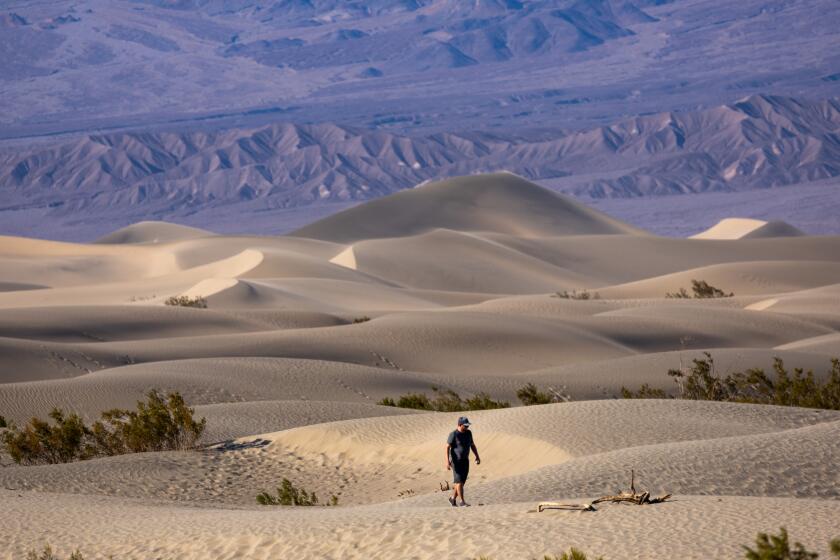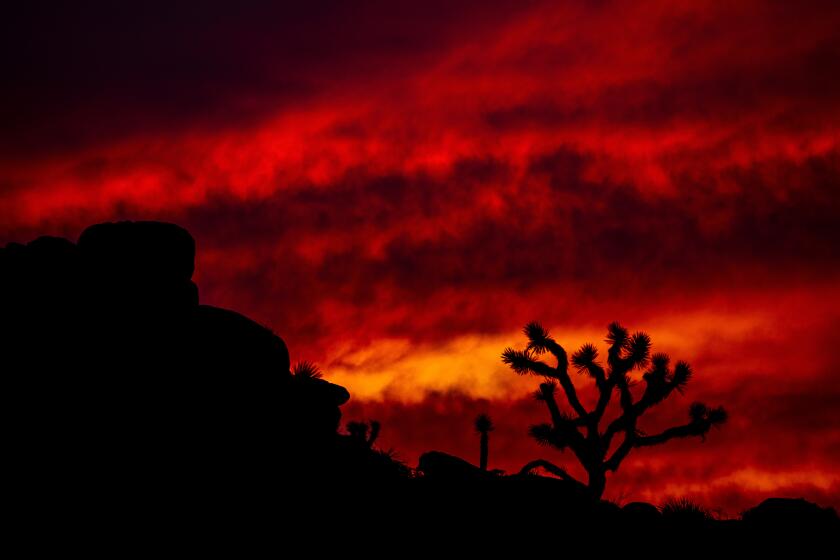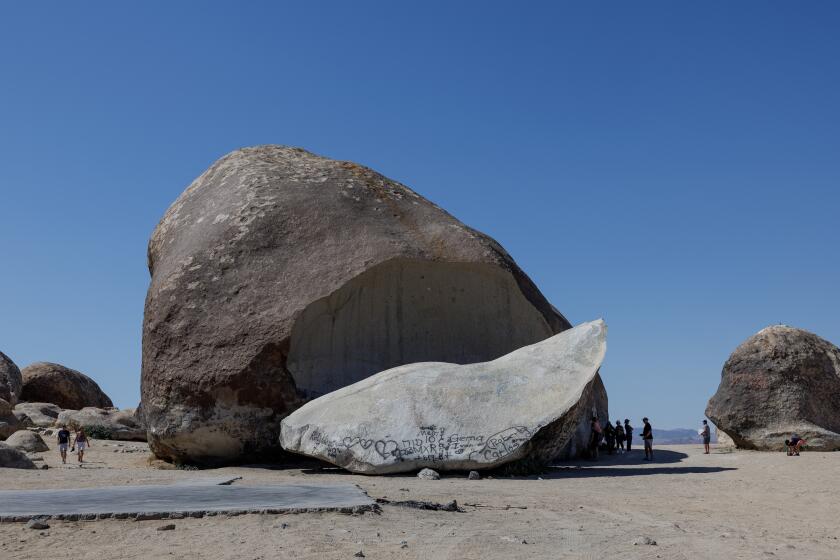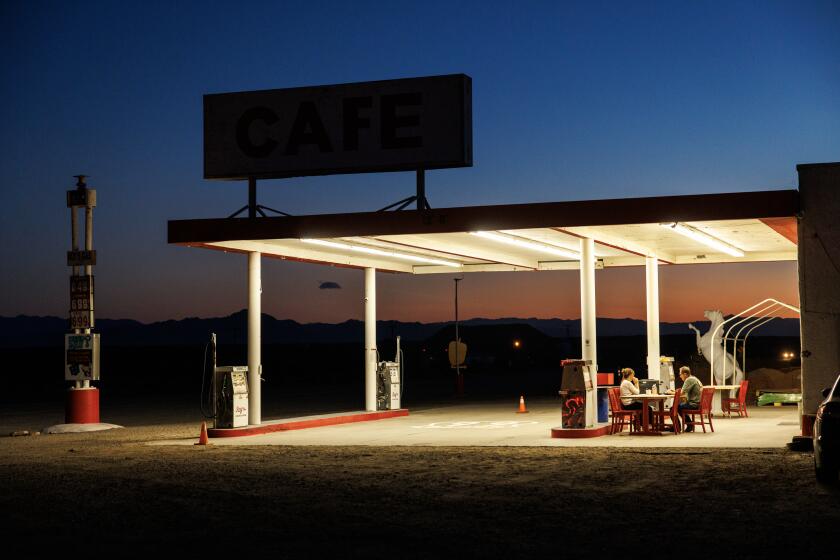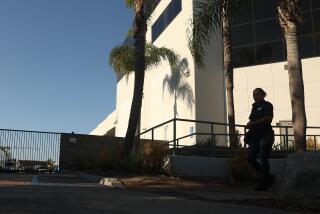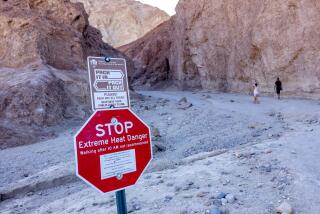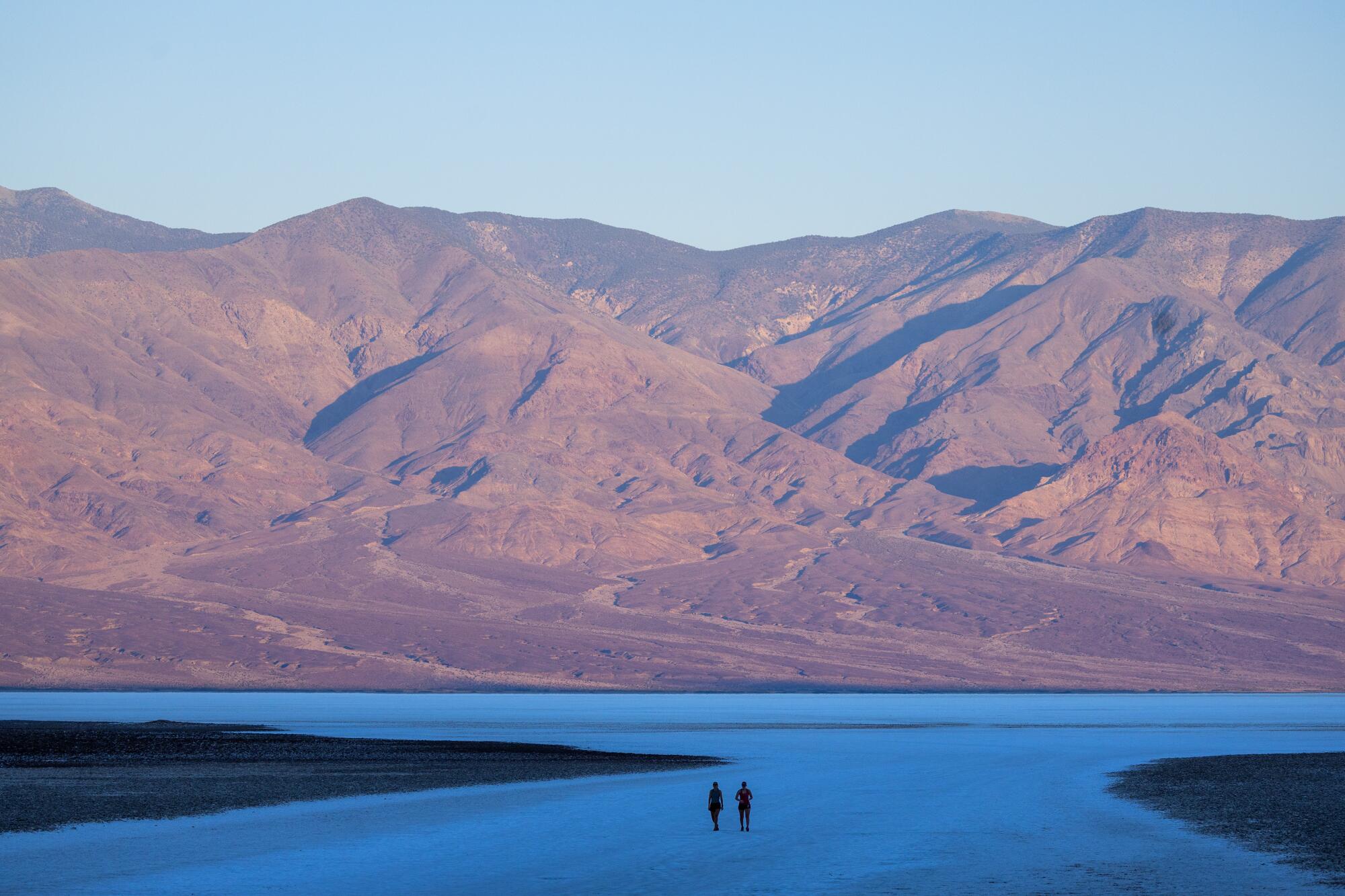
- Share via
DEATH VALLEY, Calif. — The temperature had just crept past 125 degrees, and Stephen Peterson was staring absently at a family cooling off in the Stovepipe Wells hotel swimming pool.
“It can make you stir-crazy,” he said of enduring the oppressive heat.
Summer in Death Valley — famously (or infamously) the “hottest place on Earth” — can be brutal. Even without this month’s heat wave, the temperatures in July frequently top 120.
Aggressive and impactful reporting on climate change, the environment, health and science.
Although tourists and thrill seekers seldom spend more than 24 hours here in the summer, park rangers, tourism staff and Native Americans live here full-time, when conditions can easily kill those who are careless. For some of these year-round residents, the heat can feel like a prison because of the restrictions it places on life.
Peterson and his buddy Aniken Yeager work in the kitschy tourist town of Stovepipe Wells within the national park. Peterson works at the general store and Yeager is a line cook at the restaurant and saloon. Both live in the town’s dorm-style housing near the hotel.
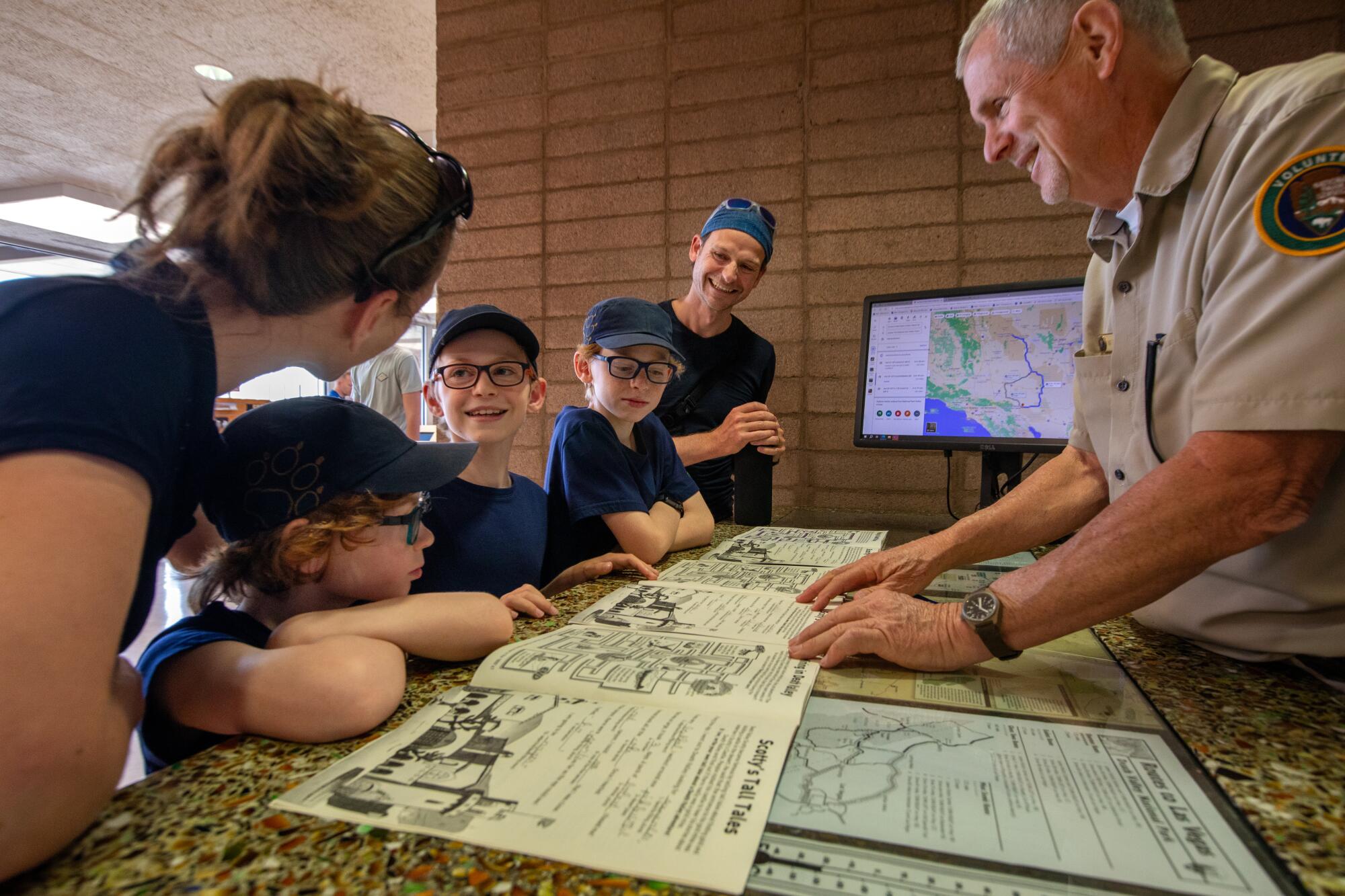
To help fight cabin fever, Yeager adopted a stray dog. “It gets lonely, man,” he said. “I don’t want to take antidepressants.”
It’s a tight-knit community with about 50 employees — if you don’t know someone personally, you know of them. “We all take care of each other,” Yeager said.

Subscribers get exclusive access to this story
We’re offering L.A. Times subscribers special access to our best journalism. Thank you for your support.
Explore more Subscriber Exclusive content.
It’s a common thread throughout the valley. Looking out for others is also, coincidentally, one of the most effective ways to keep safe during extreme heat, experts say. “Can I get you some water?” is a common refrain that often quickly follows “Hello.”
Everyone has their own metaphor for describing the heat. Yeager said it’s like standing directly behind a running car, while to Peterson it’s a blow dryer to the face.
“It sneaks up on you,” Peterson said. “The science is brutal.” Sweat evaporates so fast that the skin never gets wet — he’s only ever felt sweat two or three times during the summer. On a bad day, heat exhaustion can set in within minutes.
The Jurupa Valley City Planning Commission has requested further study on a development that potentially threatens one of the oldest plants in the world.
As the two talk, they take turns jumping into the pool for relief from the heat. It’s one of the only respites aside from the window AC units in each dorm that struggle to keep up.
In the winter, like many locals, they explore the nature that Death Valley has to offer. But in the summer, life outside in Stovepipe Wells is mostly confined to sitting by the pool, playing video games in the employee lounge or drinking at the saloon.
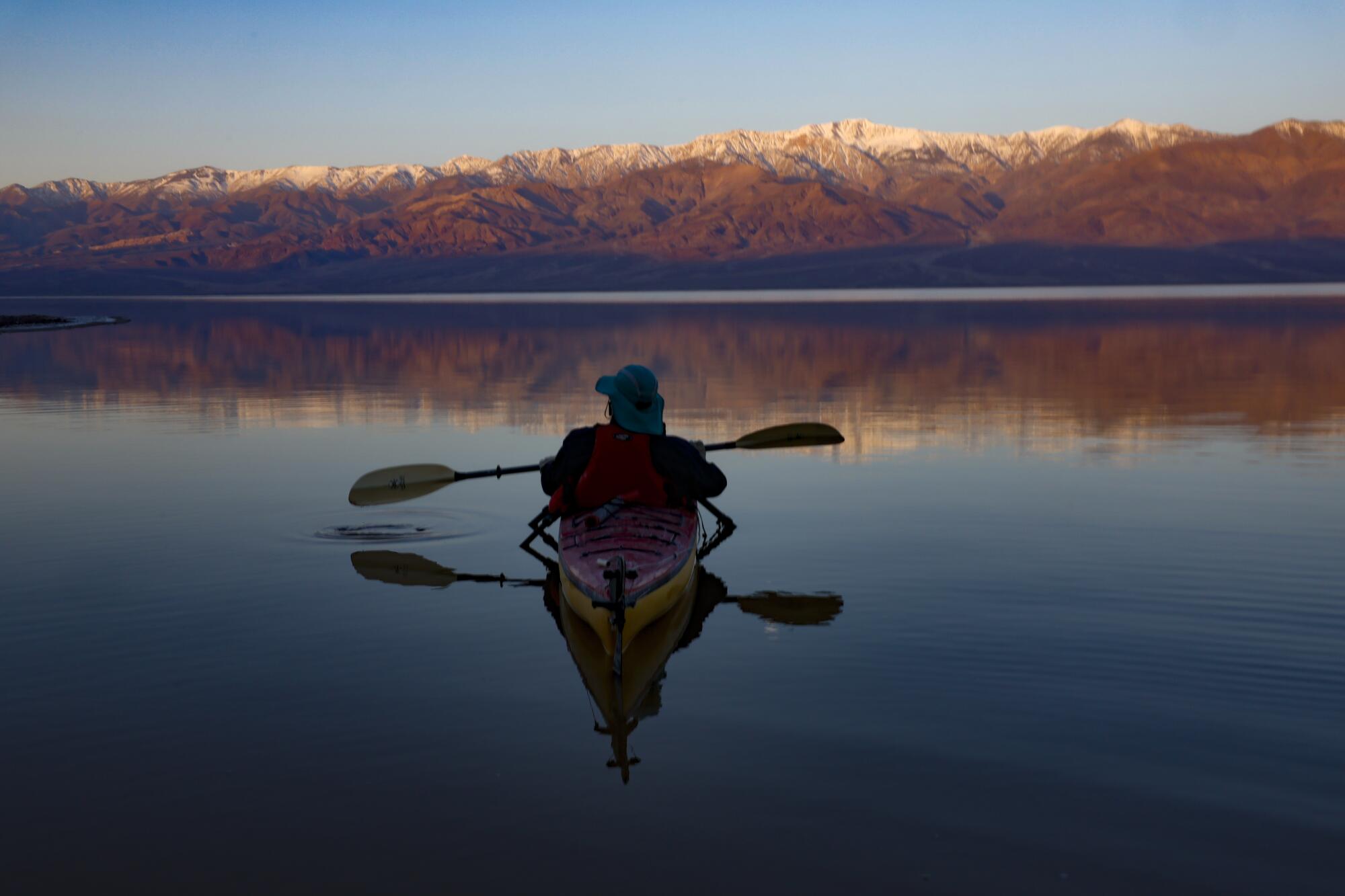
With everyone working different hours, hangouts occur by chance. On days off, those with cars take others out of the valley — places such as Las Vegas (also known for its summer heat) or other, cooler national parks are high on the list.
Peterson moved to Death Valley in the spring because the company that manages Stovepipe Wells — which is independent from the National Park Service — offers a sweet deal: cheap on-site housing and subsidized food (minus the alcohol) and modest pay.
Extreme heat is both one of Death Valley’s greatest intrigues and its most serious safety concern. It’s not uncommon for a few people to die in the park from heatstroke in any given summer.
“It’s a rare breed that comes out here,” Peterson said. Even as the heat stifles life outside of work, living in one of America’s wildlands brings a sense of freedom. Many of the employees are self-described “parkies” — part of a community who work in and around national parks, often hopping from place to place and partying hard.
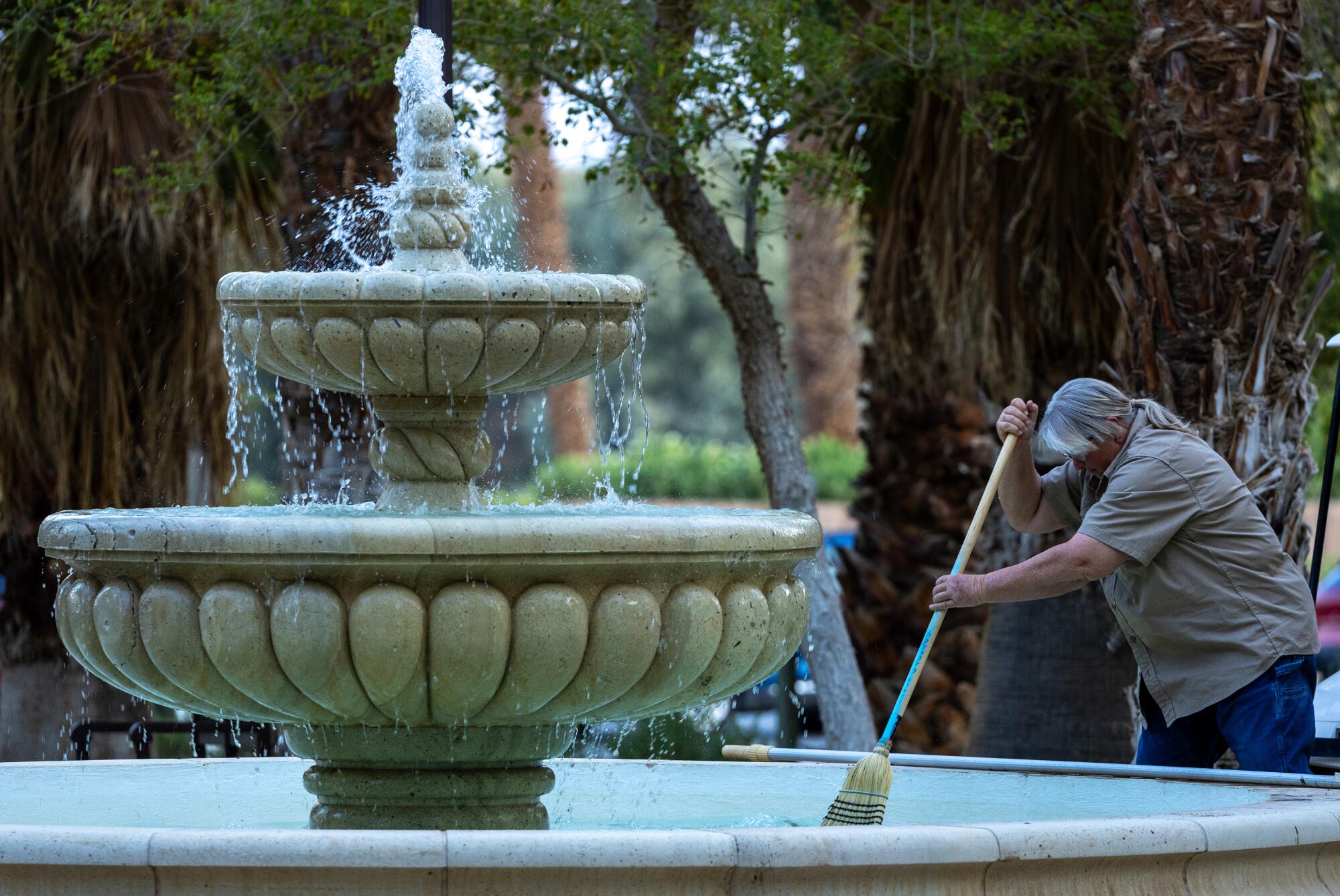
“A lot of it is, people come for six months then quit to go back to society,” said Yeager, who’s been at Death Valley for two years now. “It’s almost like spring break or a summer camp” for them.
Sign up for This Evening's Big Stories
Catch up on the day with the 7 biggest L.A. Times stories in your inbox every weekday evening.
You may occasionally receive promotional content from the Los Angeles Times.
If the parkies epitomize edgy, free-spirited campgoers, the national park rangers — many living 20 miles east on California Highway 190 in Cow Creek — embody the ideals of the scouts and camp counselors.
Jennette Jurado, who works as a park spokesperson and supervisory ranger, moved to Death Valley National Park more than four years ago because it has a program allowing spouses to work at the park. Her husband is the deputy chief of law enforcement.
“My first summer here, it was a learning experience,” Jurado said. “I started to learn to tentatively touch a metal surface before just grabbing a doorknob to open it.”
Surfaces in sunlit areas get hot enough to literally fry an egg. ( If you want to try it out yourself, Jurado recommends that you bring a frying pan so you don’t ruin your car’s paint job or create a scrambled mess on the sidewalk.)
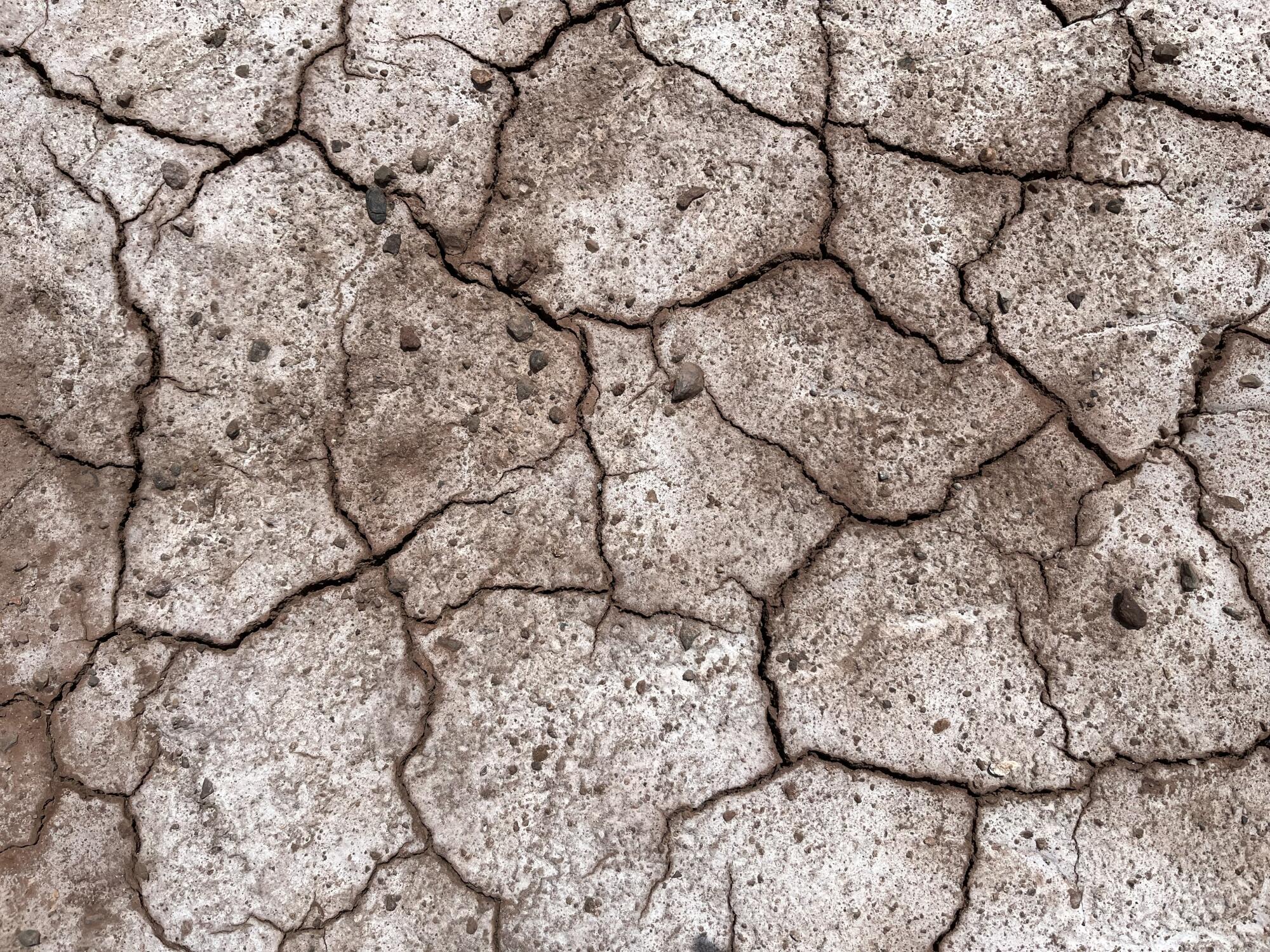
The heat encroaches on all parts of life. One park ranger measured her tap water at 105 degrees because the underground pipes were so hot. In order to avoid being scalded while showering, rangers will sometimes turn off their hot water heaters, which gives the water a chance to cool down to a more reasonable 80 degrees.
For refuge from the heat, Jurado’s favorite spot is the armchair she placed under her swamp cooler vent.
As Joshua trees struggle with climate change, habitat loss and increasingly intense wildfires, California is scrambling to complete a conservation plan.
Cow Creek has about 80 government homes. Some rangers, such as law enforcement and other emergency responders, are required to live on-site. Even the utility folks live on-site, since they maintain the park’s only source of running water.
“There’s no ‘Death Valley Water Company’ that takes care of that for us,” Jurado said.
To combat boredom, “I definitely need a project to keep me happy,” she said. Jurado spends her free time reading and painting. Others like to quilt — there’s even a book club and one ranger runs a park library on the side.
“The nice thing about living in Death Valley is we get to experience the heat increasing slowly over time,” said Jurado. “I really feel for our visitors who are coming in here, who might be coming from a place that’s only 90 or 100 degrees and jumping straight to 125, and there’s just not that time to acclimatize.”
Acclimatization, a process the body goes through to more easily handle extreme temperatures, can take a few weeks. Those who are here that long have more blood in their systems, which allows the body to more efficiently carry heat from the core to the skin. They’re also able to sweat more to shed heat.
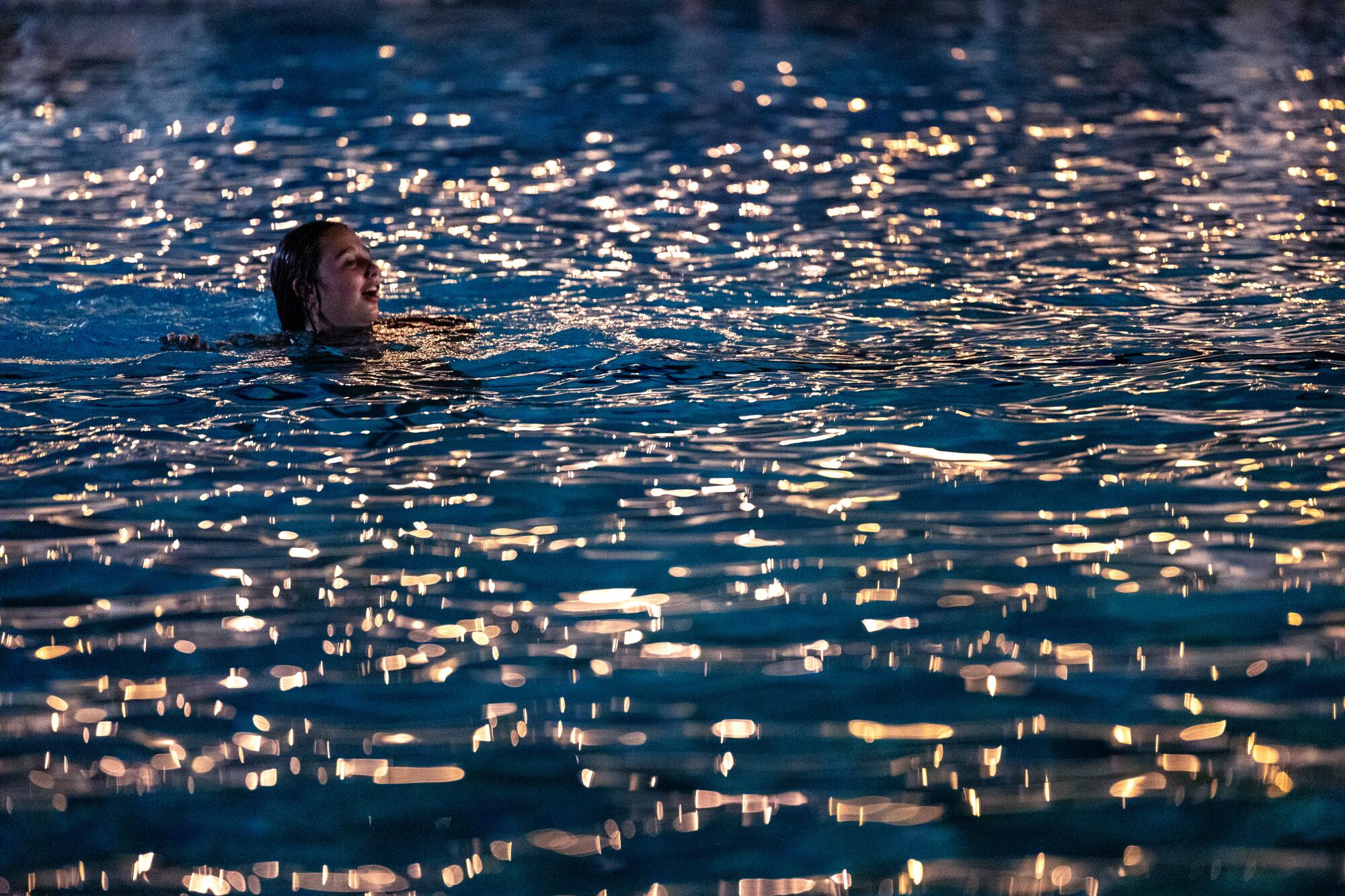
Four miles up Highway 190 from Cow Creek — tucked away on a roughly 300-acre plot of land within the park — members of the Timbisha Shoshone Tribe live through it all, as visitors and even park staff come and go. Many of the village’s 32 residents have lived in the valley their entire lives.
Mandi Campbell, the tribal historic preservation officer, says Timbisha Shoshone usually don’t have a problem with dehydration or heat exhaustion. To Campbell, it just comes down to making smart decisions based on the weather.
A seven-story boulder on federal land has become a tinderbox of tensions over who gets to enjoy this patch of Mojave Desert, which has rapidly gentrified since the COVID-19 pandemic.
“People come down here and they don’t think that it’s that serious,” Campbell said. “Things happen out here. You’re in the middle of nowhere, and [nobody] is prepared for this 120-, 130-degree weather.”
For the tribe, the heat isn’t a novelty. It’s simply a part of life. “This is our homeland — we’ve lived here all our lives,” said Cathy Cottonwood, a maintenance worker from the tribe. “We just hunker down, try to stay cool, do things in the morning and evening, just deal with it.”
In the summer months, tribal members, mostly living in mobile homes, stay cool with swamp coolers and outside misters. They check in on their families and the elders several times a day.
Amboy has been beset by a series of crises that stretch back more than half a century. But owner Kyle Okura hopes to turn it around. No less than his father’s legacy is at stake.
Campbell hopes people know the area has more to offer than the hottest temperatures on Earth. “That isn’t all that Death Valley is about,” she said. “You just have to come out and see it. It’s beautiful here. … Just come at a different time.”


